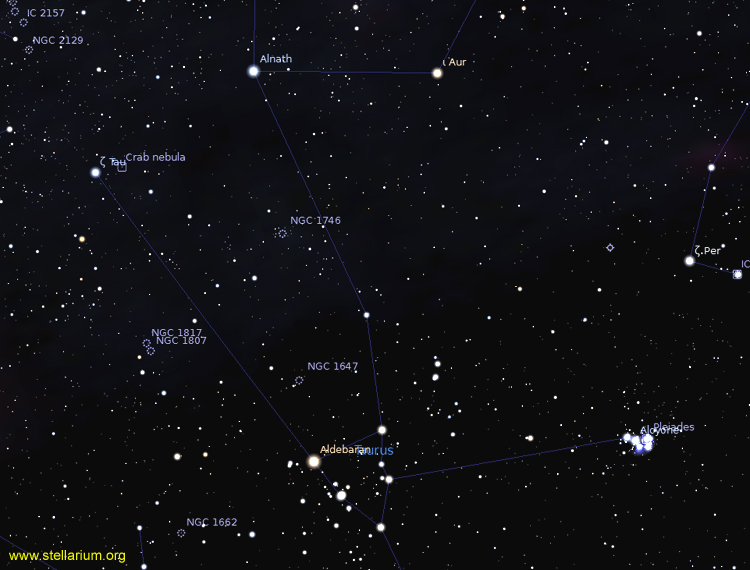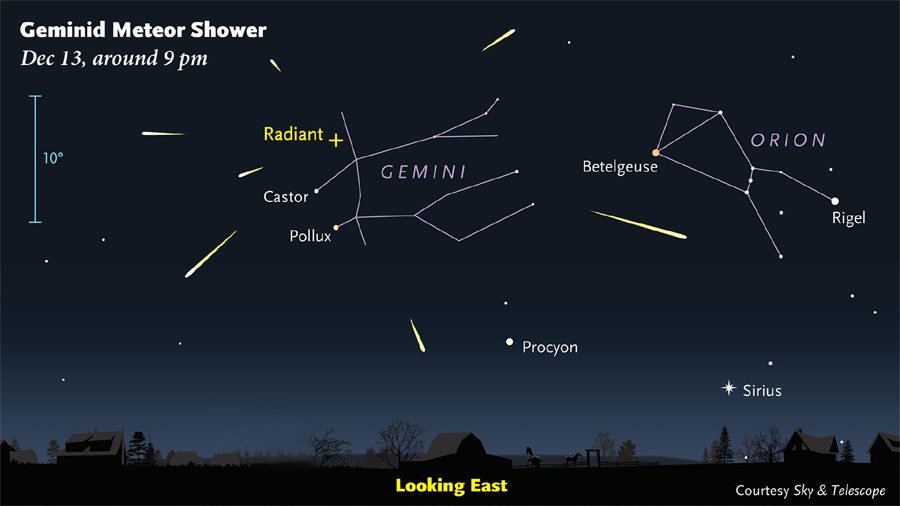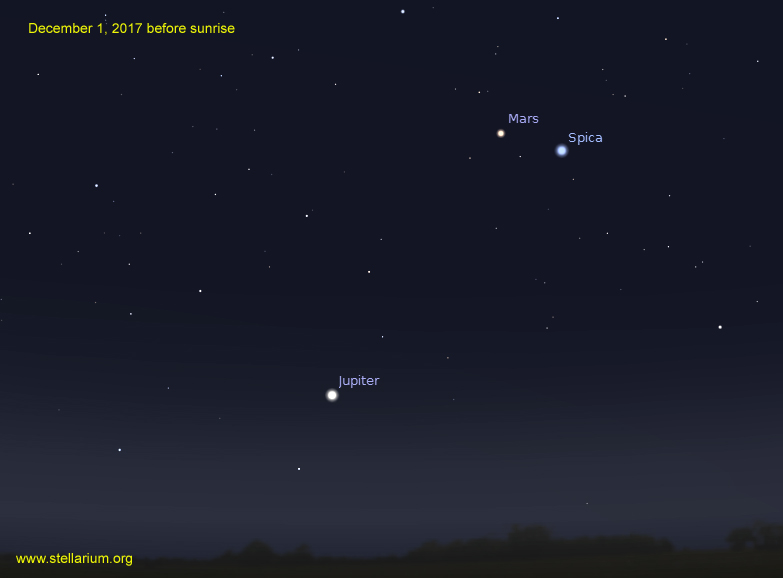Taurus the Bull
Open star clusters, for the most part, require some sort of optical aid such as a spotting scope, a pair of binoculars or a telescope. There are 27 open clusters seen in Canadian skies that are brighter than fifth magnitude. Such objects are a fantastic sight when seen with the unaided eye. Throughout the year we can observe M7 in Scorpius, the Beehive Cluster in Cancer and the Double Cluster in Perseus to name a few. Taurus the Bull has the unique distinction of having both the first and third closest open clusters to us.
The Bull can be seen above the eastern horizon an hour after sunset. The bright “V” shaped group of stars called the Hyades Cluster outlines the head and horns. At 150 light-years away, it is the closest star cluster to us. The brightest star in the head is named Aldebaran aka the “angry eye” of the Bull and is an orange K5 giant star. It is a foreground sun located only 67 light-years away with a luminosity of 370 times that of the Sun.

We now turn our attention to the Pleiades or M45. Commonly known as the “Seven Sisters” it presents the bull’s heart according to mythology. At three times the distance of the Hyades, M45 is still wide enough for two full moons to fit across it. The young Pleiades are estimated to be about 125 million years old compared to the Hyades age of 625 million years. Over the past 100,000 years, the Pleiades have been passing through a cloud of gas and dust. The young stars are lighting up the area in this reflection nebula much like a flashlight does on a foggy night. Long exposures will show the lovely bluish glow around the stars. The magnetic field near Merope is causing the “streaks” in the gas cloud.
The longhorns are an extension of the Hyades and end up above its combattant - Orion the Hunter. In fact, the right horn named Alnath is also anchored with the constellation Auriga. Locate the tip of the left horn (Zeta) and not too far is the famous Crab Nebula. This is the best example of the ultimate destruction of a star, a supernova. It occurred on July 4, 1054 AD and was visible in the daytime for 23 days and faded from nightly view after two years. Astronomers detect the resulting pulsar in 1968 which measures only 20 kilometres across and spinning at 33 times a second. The Crab is listed at magnitude 8.4.

The Geminids peaks on the night of December 13/14. Considered the best meteor shower of the year the very thin waning crescent moon will allow you to see up to 120 meteors per hour or one "shooting star" every 30 seconds on average. The parent of the shower is 3200 Phaethon. Tiny particles will be hitting the atmosphere at 35 km/hr producing long, sometimes bright, slow-moving streaks.
Jupiter and Mars are the only planets visible in the morning sky. Venus might be glimpsed low on the horizon at the beginning of the month but will too close and dangerous to search for it. Venus reaches superior conjunction on January 9 and will begin to emerge in the western sky in March. Winter solstice will occur at 16:28 UT on December 21.

When buying a Christmas gift for that budding astronomer or yourself, I suggest first starting with a good pair of wide-angle binoculars such as 7X35 or a small mirrored telescope. Reach out to your local telescope store or online dealer to discuss the best option for you and try to stay away from the “big box” stores. The Full Cold Moon occurs on December 3 at 10:47 am EST. The new moon occurs on the 18th.
Until next month, clear skies everyone.
Twitter: @astroeducator
